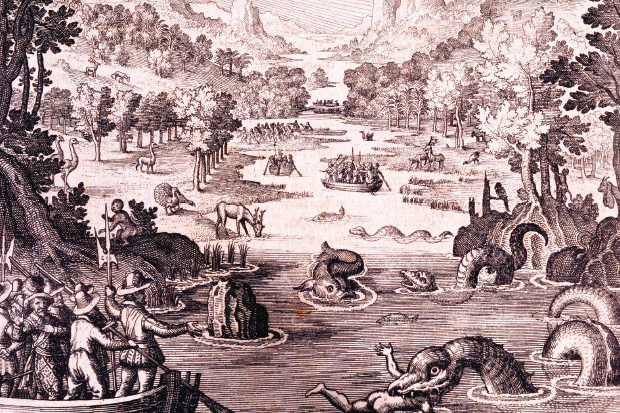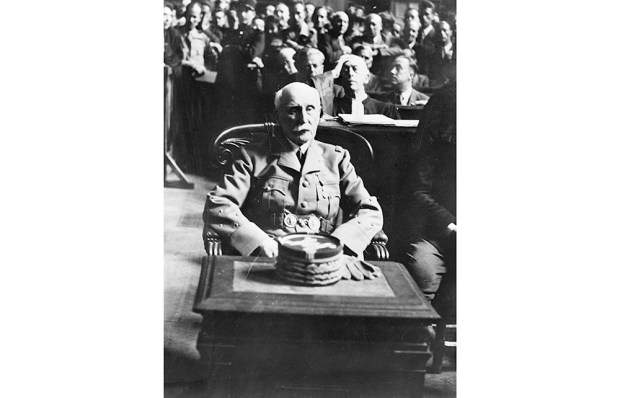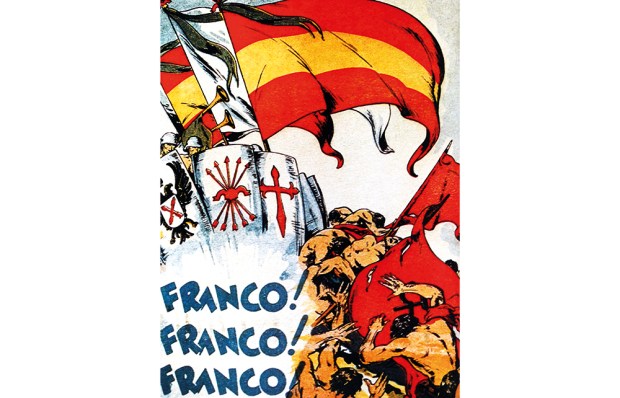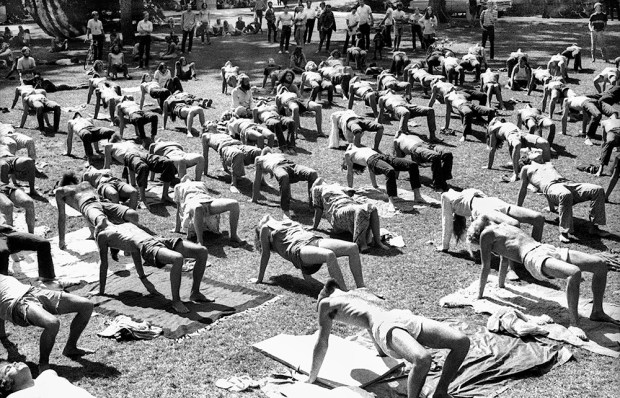These days, there are few countries as obscure and exotic as Suriname. Perched on the north-east coast of South America, it has the same population as Cornwall but is over 40 times the size. Ninety per cent of it is covered in jungle, and new species are always tumbling out of its darkness (mostly bugs and purple frogs). The current president, Desi Bouterse, is a convicted cocaine smuggler, and during his term in office he has stood trial for multiple murders. Meanwhile, in the country’s pretty little capital, Paramaribo, they speak 20 languages and maintain 15 Marxist parties, all saying something different. During my time there, a caiman would often creep out of the park at night and eat the city’s dogs.
Even stranger, all of this began with an English colony. The story of Francis Willoughby, 5th Baron Willoughby of Parham, and his curious private fiefdom, has never been fully told before. Now it has a champion in Matthew Parker, whose previous books include the much-admired Goldeneye. This time, he’s set himself a formidable task. The colony only lasted 16 years, ending in 1667; there are few records, and what remains of the infrastructure has long since been swallowed up by forest. But Parker has trawled the letters and literature, and travelled out to Suriname, and the result is a miniature masterpiece.
In many ways, colonisation of the ‘Wild Coast’, or Guiana, was an absurd idea. Back in 1596, Sir Walter Raleigh had published a glowing prospectus of the region (complete with a diamond mountain and headless men), but it would never match reality. By the mid-17th century, almost every English attempt at settlement had failed. One of the last colonies had collapsed in 1627, under a hail of poison arrows. It was a discouraging sight. According to survivors, many of the colonists had died ‘stark mad, with their bowels breaking out of their bodies…’
The English civil war, explains Parker, soon changed attitudes. With the country in ruins, people once again started to look abroad for space and freedom. Leading the way was Willoughby, a somewhat ridiculous figure who was forever cooking up plots and changing sides. Having fought for Parliament during the war, he then became a Royalist and, by 1651, he was in Barbados, ready to defend it against the Roundheads. Suriname, which he’d ‘possessed’ that year, was supposed to be his ‘Plan B’, a bolthole in case it all went wrong. That, of course, is exactly what happened, and that’s how he found himself sailing off to ‘Willoughbyland’ (as it became) with a few hundred Barbadian diehards.
This being the colony’s tale, Willoughby soon takes a peripheral role. After sinking a fortune in the settlement, he returned to Europe to resume his plotting, and wouldn’t come back for another ten years. Oddly, in his absence, the settlement thrived. Plantations soon covered both banks of the Suriname River, and a little town appeared, called Torarica. More colonists arrived, and the numbers grew from 600 in 1654 to 4,000 eight years later. Everyone was welcome, whether they were ‘Brethren’ (radicals), Royalists or Jews. What’s more, says Parker, there was, for a while, ‘no discernible leadership’, and society became weirdly democratic. As one diarist noted, it was ‘a peculiar kind of government’. But it was also successful and, in 1664, Willoughbyland was declared the most ‘hopeful’ colony in the empire.
It’s in the details of colony life that Parker is at his most intriguing. Like every Eden, it had its snakes. Many settlers drank themselves to death, and the commonest ailment was the ‘French Pox’. Other trials included ‘river blindness’ and malaria, or ‘sweating disease’. Then there were all the unfamiliar hazards of the South American forest, like ‘tigers’ (or jaguars) and ‘numb eels’, with their lethal electric punch. ‘The delights of warm countries,’ noted one settler, ‘are mixed with sharp sauces.’
For most of the planters, however, it was a beautiful torrid world, and the profits were huge. Not only did Willoughbyland produce the finest sugar, it also exported dyes, tobacco, honey, wax, ‘rich gums, balsoms, many Physickall drugs’, and cotton. Here too were exquisite fruits and ‘noble aromaticks’, and every day was spring. As for the indigenous women, they were — it was said — well-favoured, ‘generally lascivious’ and ‘fat of body’. By the standards of the 1660s, the colony was a variant of Paradise.
But it couldn’t last. Parker argues that it was the introduction of slaves that brought about decline. Until 1663, much of the workforce was English, filled out with biddable Amerindians known as ‘beavers’. That year, however, slavery received royal sanction and, by 1667, there were as many slaves as settlers. Willoughbyland was transformed, says Parker, and became a place of cruelty, decadence and fear. Consider, for example, the fate of a Londoner, John Allin. For the crime of suicide, his naked corpse was dragged through the streets, cut up, barbecued, and set out on stakes.
It was at about this time that Aphra Behn appeared. These days, we think of her as the greatest dramatist of her age, after Dryden. But back then she was 23, unknown, and a rare beauty, who’d been sent by the Crown. No summary can do justice to her racy exploits, but Parker sets them all out with glorious flair. I’ll say only this: Behn was eventually expelled from the colony, and I no longer think of her first as a writer but as ‘Agent 160’.
By the time Willoughby returned, in 1664, his colony was rich, sinister and mori-bund. But it took a war to polish it off, along with the baron himself. The following year, he was drowned on a military expedition, and then, in 1667, the Dutch invaded. The family were furious at losing their estate to a load of ‘brewers and cheesemongers’, and sent Willoughby’s brother to capture it back. But, although he succeeded, it was by then too late. Under the Treaty of Breda, the English had agreed to give up Willoughbyland in return for a cold, useless slab of North America now known as New York.
Parker describes an untidy end. There’s treachery, more espionage and a settling of scores. Eventually, however, the colony broke up. Carrying off whatever they could, the English burnt down their mills. During the chaos, many slaves escaped and vanished into the forest. (Their descendants, known as ‘Maroons’, are still there, living African lives and chattering away in an old slave language called ‘Talkie-talkie’. For centuries they were the nucleus of revolt, and even in the 1980s they were at the heart of a tiny civil war.) ‘The English had come to Paradise, to a heaven,’ says Parker, ‘and left behind a hell.’
As to his conclusions, the author is wisely modest. Willoughbyland made little impact back home, and was soon forgotten. At most, it was a microcosm of empire, signalling the change from a commonwealth of ‘little Englands’ to ‘racialised plantation societies’. But, for all that, this is a truly extraordinary tale and, in Parker’s hands, it’s beautifully told. With great wit and scholarship he reveals — just for a moment — a cruel and curious world, before it vanishes again beneath the trees.
Got something to add? Join the discussion and comment below.
Get 10 issues for just $10
Subscribe to The Spectator Australia today for the next 10 magazine issues, plus full online access, for just $10.
Available from the Spectator Bookshop, £13.99 Tel: 08430 600033
You might disagree with half of it, but you’ll enjoy reading all of it. Try your first month for free, then just $2 a week for the remainder of your first year.














Comments
Don't miss out
Join the conversation with other Spectator Australia readers. Subscribe to leave a comment.
SUBSCRIBEAlready a subscriber? Log in